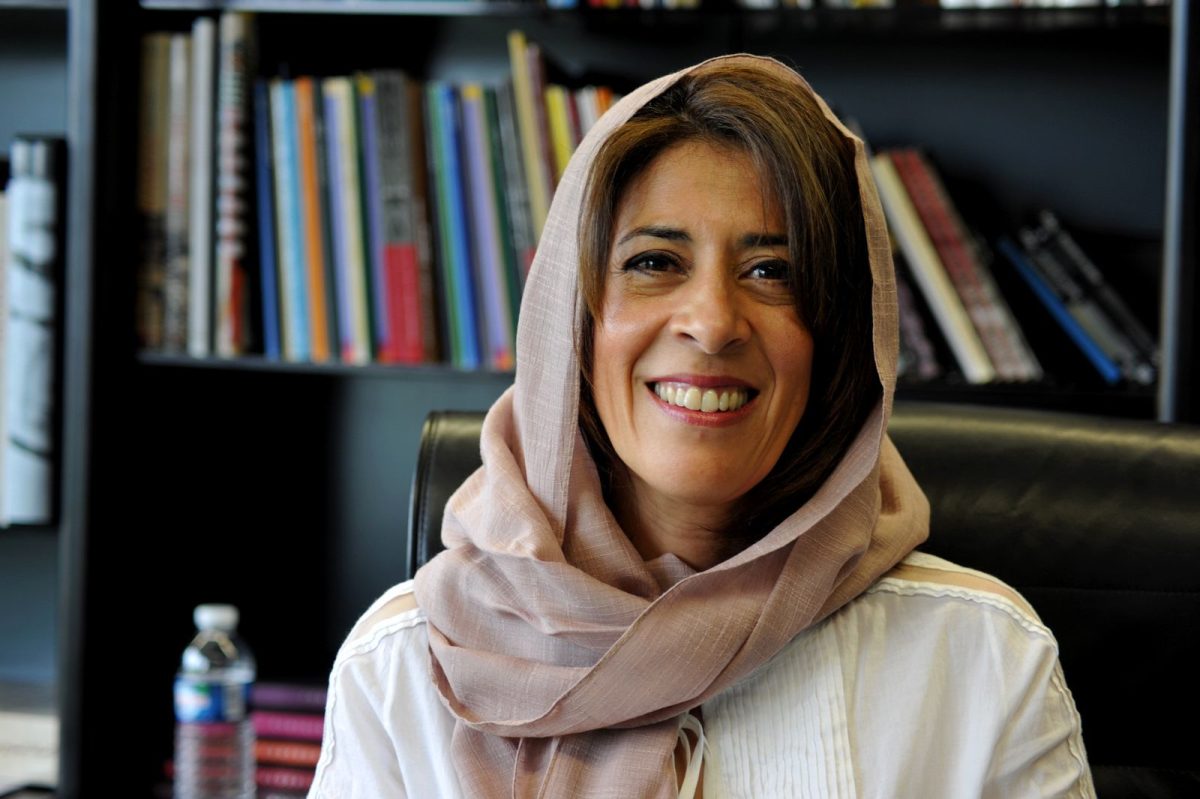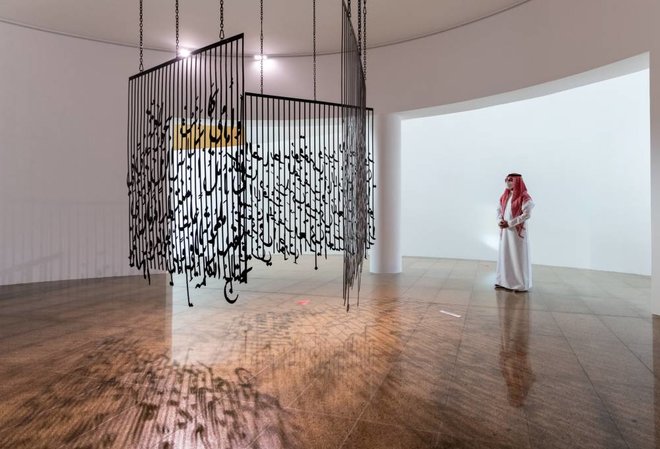
The Culture Diplomat: Mona Khazindar On Her Book Visions from Abroad And Her Contributions To Arab Art And Culture
For decades Mona Khazindar has successfully used the realms of art and literature to foster positive dialogues between cultures, and educate the world on the unique heritage of her Saudi homeland
Historian and curator Mona Khazindar has spent a lifetime bringing the story of the Arab world to a global audience. In her remarkable career she was named the Director General of the Arab World Institute (IMA) in Paris, the first Arab woman to ever hold the position. A job she stepped into after serving for over twenty years as the head of the Department of Contemporary Art and Photography at the institute. She held the Director General role for three years before taking on new challenges that included serving as a cultural adviser to the Saudi Commission for Tourism and Heritage, being appointed a member of the Saudi General Authority for Culture and also becoming a member of the advisory board of the King Abdul Aziz Center of World Culture (Ithra). More recently she also became a member of the Saudi Shoura Council, which advises the King on issues that are vital to the future of Saudi Arabia.
But that list of accomplishments just scratches the surface of Mona’s vast contribution to the pursuit, and sharing, of knowledge. As an author, she has published multiple literary works that focus on the contemporary arts and Arab culture. She has also translated the work of other Arab authors and artists so that they could be accessible to a wider global audience and she has produced countless exhibitions that celebrate Arab history, culture and art. She also notably founded Palette, a collective designed to organize cultural initiatives that put the spotlight on different artists and cultural narratives.
We spoke with the award-winning art historian about her cultural and career journey and learned that, for Mona, art and literature are incredibly powerful avenues people can use to discover just how interconnected we truly are.
There is no question that the environment we grow up in and our families have a fundamental impact on shaping who we become. You were born in the United States to well-educated parents, your father is the author and scholar Abed Khazindar, and your mother is the journalist Shams Al Hussaini – the editor of the Women page in Al Yamamah magazine. How did having them as your earliest role models shape your upbringing and your career path?
I consider myself blessed. Since my early childhood, I absorbed culture and literature through my parents, so there is no doubt they had played a significant part in where I stand today. I was greatly influenced by my father, from whom I took my passion for history, languages and intercultural communication. While my mother influenced my admiration for culture, literature and criticism. Literature has always been present in our house. I consider reading as a window to discover other worlds and cultures.
Your career took off at the Arab World Institute in Paris, where you spent over 25 years helping people expand their cultural horizons. How would you describe your experience working at the institute over those decades?
The Arab World Institute was a platform to achieve a long-term goal. That is, introducing the Arab culture to France and Europe. I headed the Department of Contemporary Art and Photography in the museum of the Institute for around 20 years (the department includes a permanent collection of 499 artworks). I have also curated numerous art exhibitions put on by the institution. These include Perceptions of Contemporary Arab Photographers, Modernity in Plural Form, Um Khalthom: The Fourth Pyramid, Palestine, and Creativity in All its Forms. I have overseen the publication of the catalogues and books related to these exhibits. Art exhibitions and other cultural and artistic initiatives I had the chance to curate provided unique occasions where Arab and European intellectuals engaged in a unique intercultural exchange and dialogue.
Your book Visions from Abroad: Historical and Contemporary Representations of Arabia is more like a visual museum you can hold in your hand. It summarizes the journeys of more than 100 travellers to the Arabian Peninsula starting from the Middle Ages. Why did you feel it was so important to bring this book to life?
The book discusses a subject that I was curious about, how the world views the Arabian Peninsula in light of Western travellers’ writings about, and portrayal of, the region starting from the 16th century and up until the 20th century, the modern era. I tried in this book to collect foreign travellers’ texts and to examine and analyse them, in addition to collecting images, paintings, archives, maps and designs they drew of the region.
The book has a deeply emotional and moral value to me on a personal level as well. I wrote it after the death of my father and my return to the Kingdom, after having spent many years abroad. Through my research, I was trying to pay tribute to the memory of my father and embody his passion for intercultural dialogue and civilisational exchange. The book marks a turning point in my life. I went back to my roots to discover and analyse how others perceive my country and how they approach its culture and heritage. It also allowed me to accept the loss of my father and make peace with the idea that he is gone. At times, writing is an act of self-liberation and reconciliation.
Why do you feel so strongly that it is critical to promote intercultural dialogue and what have you found are the best and most productive ways of opening those channels of discussion between people who have different perspectives and experiences?
I have found that narrow-mindedness is due to the lack of knowledge about the other – as we fear the unknown. The importance of introducing nations and cultures to one another stems from this – to overcome the fear of the unknown, break stereotypes, support openness, and respect multiculturalism and diversity.
I strongly believe that cultural diplomacy is an optimal means by which to achieve these goals. Collaboration among nations and countries in culture, art and literature inevitably enhances the understanding of the ‘other’ and contributes to the exchange of knowledge among societies. In this context, for example, the Kingdom’s participation in multiple cultural events abroad contributes to promoting the Kingdom’s cultural representation on the global stage and enhances the presence of Arab culture and arts abroad. We should be proud of the Arab world’s cultural richness and introduce it to others.
After your return to the Kingdom, you established Palette – an arts and culture collective that curates cultural projects and art publications in the Kingdom and beyond. Of all the projects you brought to life, which is the closest to your heart?
It is without a doubt Scripts and Calligraphy: A Timeless Journey that was organized by the Ministry of Culture’s Deputyship of Cultural Assets and Centers, and held at the National Museum of Riyadh in the Summer of 2021 to celebrate the Year of Arabic Calligraphy, an initiative aimed at highlighting the importance of Arabic Calligraphy as an intrinsic component of Arab culture and increase its practice in institutions and among Saudi citizens. In its first edition, the exhibition presented the origins of the Arabic script and the development of the art of calligraphy. It paid tribute to Saudi and international master calligraphers, contemporary artists and designers. The project also highlighted the artistic relationship between calligraphy and artificial intelligence, thus demonstrating the timelessness of Arabic calligraphy and its endless journey towards the future of art.
Currently, we are preparing for the second edition of the Scripts and Calligraphy exhibit under the theme “Paths of the Soul”. This edition explores the spiritual dimension of calligraphy in the Arab-Muslim civilization. This edition invites visitors to embark on an intimate journey of discovery and reflection on Arabic calligraphy. I hope that this exhibit achieves its goal in showcasing the value of Arabic calligraphy and celebrating it as a cultural treasure that is part of the Kingdom’s identity and heritage.

You have had a highly successful career following your passion for culture, what do you think made it possible for you to reach the pinnacle of this field?
I believe that passion, hard work, perseverance and striving for self-development are all elements that are key to success. There is also no doubt that behind every successful woman is a family that supports and encourages her to reach her full potential. I am blessed to have my husband and kids who are always my biggest supporters. I draw from them my strength, determination and inspiration. And most important is my faith in Allah Almighty who grants us the strength to keep pushing forward and overcoming obstacles and challenges.
What is your advice to Saudi and Arab women?
I am not in the habit of giving advice, as every woman has her own unique experience. However, I encourage Saudi and Arab women to be brave enough to dream, believe in their dream, and work hard to achieve it.
To read the original story from Harper’s Bazaar Arabia‘s Arabic website click here.
Images Supplied
